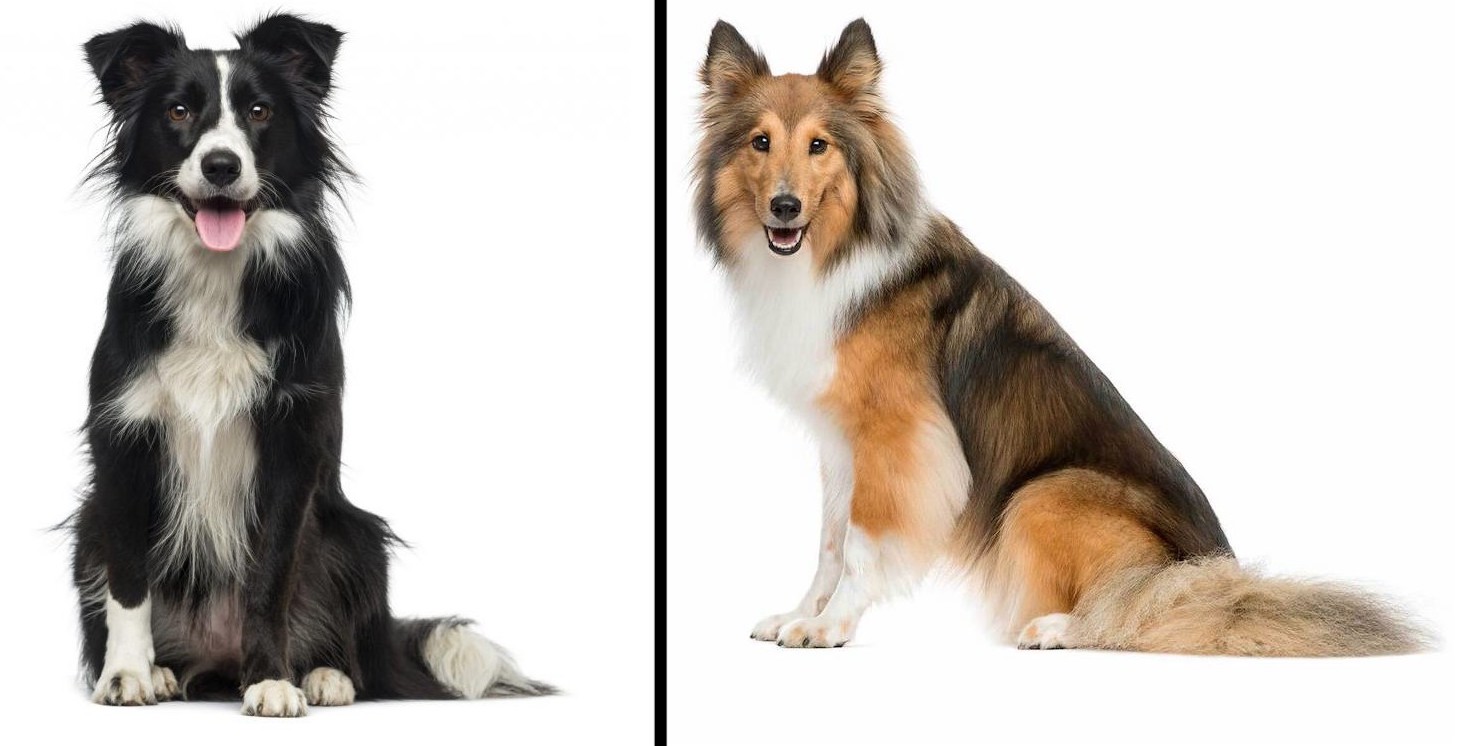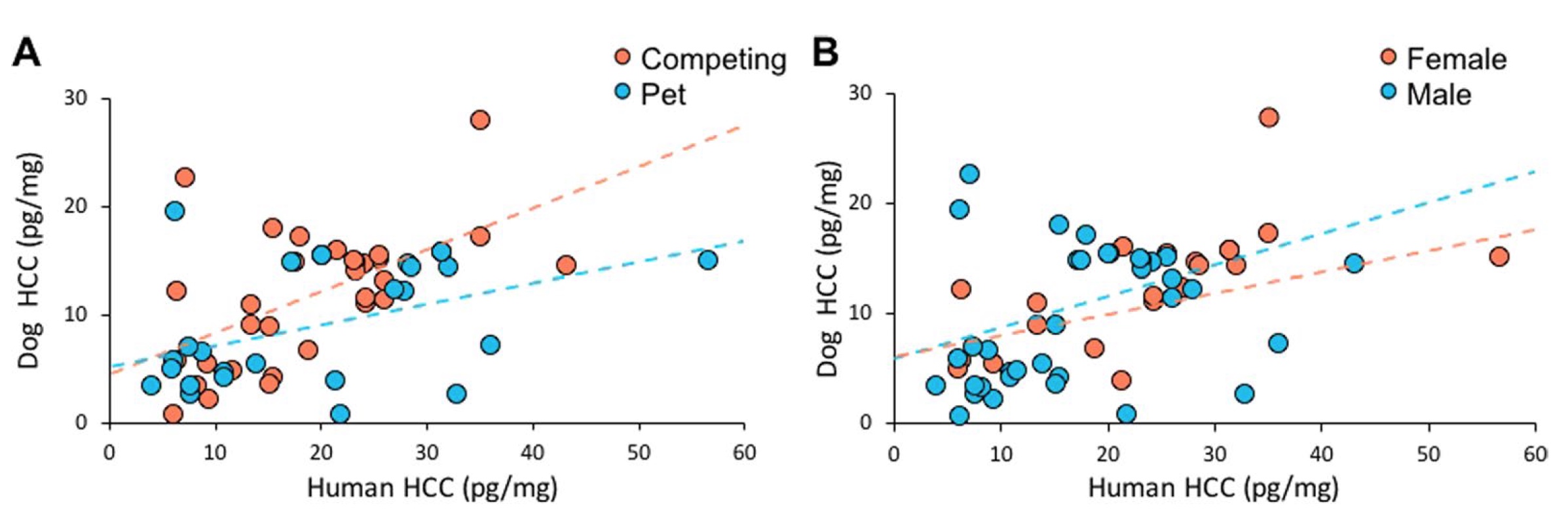Contagious stress: interspecies synchronization of cortisol levels on the example of dogs and their owners

Man is a social being. No matter how a separate individual tries to be isolated or removed, other people will influence him in one way or another, who may not even want to. This phenomenon is called intraspecific bi-directional psycho-emotional reaction. An important word in this long definition is “intraspecific”. This means that a similar reaction can be observed not only in a group of people, but also in flocks of birds, in a pride of lions, or even in a flock of sheep. Organisms that have been in close contact for a long time, one way or another, will influence each other, including in aspects of the psycho-emotional state. Today we will talk with you about the study, the results of which, according to the authors, were the first material evidence of an interspecific bidirectional psycho-emotional reaction. How exactly does this phenomenon manifest, who became an experimental subject in the study, and how do scientists support their findings? This we learn from the report of the research group. Go.
The basis of the study
If you ask what characteristics a person stands out from other creatures, then many will first of all call intelligence, and this will be true. Others add sociality and emotionality, but these epithets are applicable not only to people. Any creatures living in groups are social. As for emotions, a person can and has a wider range of emotions and methods of their expression than any meerkat, but emotions are not its unique feature.
')
The psycho-emotional state of the individual is very dough associated with its environment, in particular with the society that surrounds it. Scientists call it infectious emotions, among which the strongest "infection" is stress. For example, it was found that students whose teacher used up permanent stress had elevated cortisol levels * .
Cortisol * is a biologically active glucocorticoid hormone that is involved in the body's response to stressful situations.A similar pattern can be observed even in prairie voles (Microtus ochrogaster), demonstrating a correlation of stress levels with a partner who was previously exposed to a stressor * .
Stressor * - any factor that causes stress.But these are examples of intra-specific stress correlation. Interspecific also exists, although not so studied. In order to fix this, scientists have proposed to investigate the levels of stress in domestic dogs and their owners. As we discussed the previous Friday , man and dog have coexisted for thousands of years. Both those and others are social beings, therefore it is quite expected that the psycho-emotional interrelation takes place in this kind of relationship.
Scientists say that between the man and his four-legged friend, interspecies long-term synchronization of the stress hormone (cortisol) can occur, the level of which can be checked with the help of hair. They decided to reject blood and saliva, as these materials give results describing a recent period, and hair allows us to evaluate the long-term hormonal background. The hair grows, however banal it may sound, and cortisol leaves its imprint in them, by studying which you can get a retrospective calendar of concentrations of this hormone. A similar analysis has already been conducted with the participation of mothers and their children, whose cortisol levels were synchronized by the results.
As for dogs, an important feature in the communication of a person with his pet is training and setting up a hierarchy. If the dog is not trained, she can shkodnichat (for example, water your favorite flowers not as you would like, or bark and throw at passing people). In order to achieve discipline, the dog must understand that its owner is the leader, that is, the dominant individual in the pack. The process of training and disciplining dogs leads not only to the emotional connection between it and the person, but also affects the behavior of each of the dyaddirectionally * .
Dyad * is a symbiosis in which hierarchical dependence takes place. A dyad is also a collection of two interconnected objects, that is, a pair.Cortisol levels, as studies have shown, in dogs and humans also depend on the personality characteristics of the host and even the dog’s / host’s combination in the dyad.

Study participants: border collie (left) and sheltie (right).
In this work, the scientists decided to study in more detail the issue of interspecific psycho-emotional synchronization on the example of the man-dog diodes. To do this, 58 people and their pets were invited as subjects (ie, 58 dyads). Scientists observed the physical activity of each of the dogs through a special collar, transmitting data about the state of the dog's body. The level of cortisol in dogs and hosts was measured in the summer and winter months in order to analyze its changes in the period between the collection of biomaterials (hair). The study involved two types of dogs — the shelties (33 individuals: 18 females and 15 males) and the border collie (25 individuals: 13 females and 12 males), among which were both regular pets and regular participants of various competitions. All dog owners were female. The average age of the tail subjects was 4.7 ± 0.4 years for regular pets and 4.7 ± 0.7 for participants. The average age of the owners of dogs was 46.3 ± 1.7 years.
Research results
To analyze the effect of man on a dog, a generalized linear model was used, taking into account the sex, breed and lifestyle of pets.

Image number 1
As can be seen in the graph above, the host cortisol does indeed strongly influence the same indicator in dogs both in winter (N = 55, χ 2 = 13.796, P <0.001, β = 0.027), and in summer (N = 57, χ 2 = 23.697, P <0.001, β = 0.235). Simply put, with increasing levels of cortisol in humans, the same thing happened in dogs.
During the summer months, the brightest interrelations were between HCC (hair cortisol concentration - concentration of cortisol in hair) by a human and a dog's lifestyle (χ 2 = 6.268, P = 0.012, 2A ) and between HCC and a dog’s floor (χ 2 = 5.200, P = 0.023, 2B ).

Image # 2: HCC and Lifestyle Relationship ( 2A ); the relationship of HCC and the sex of the dog ( 2B ).
All dogs, regardless of gender and lifestyle, influenced human HCC, but females and dogs participating in competitions had the strongest effect.
In winter, the breed played a large role (χ 2 = 6.451, P = 0.011): in the shelter, the HCC was significantly higher than in the border collie (12.905 ± 1.417 versus 12.069 ± 1.203).

Image number 3: the relationship of HCC and the time of year when biomaterials were taken for analysis.
In addition to the above factors, there are others (does the dog's owner work, the dog's age, has it lived with other pets, etc.). However, these factors had almost no effect on the results, because the researchers did not pay attention to them.
But physical activity can actually affect the level of cortisol in the body, because scientists decided to check the correlation of the long-term level of cortisol and the activity of dogs. Monitoring of the status of quadrupeds was carried out by means of a special collar for 1 week, from which scientists isolated 3 workers and 1 day off for analysis.
The amount of time spent by dogs in a state of medium and high physical activity correlated with HCC dogs. There was no significant correlation with either the summer HCC (N = 44, r = -0.213, P = 0.165), or the winter HCC (N = 43, r = -0.239, P = 0.122).
The most curious factor for scientists to influence the level of cortisol remained character, that is, the personal characteristics of the dog and its owner. The study participants completed 2 questionnaires: DPQ (Dog Personality Questionnaire - questionnaire regarding the character of the dog) and The Big Five Inventory (questionnaire regarding the personality traits of a person).
As it turned out, the nature of the owner greatly affects the level of pet cortisol. Thus, an increased level of neuroticism in humans had a negative effect on dog's HCC (summer: χ 2 = 7.951, P = 0.005, β = −0.364; winter: χ 2 = 4.919, P = 0.027, β = −0.026).
Finally, scientists checked how the season itself affects cortisol levels, because the samples were deliberately taken in summer and winter. It was found that in winter, the level of stress hormone is much higher than in summer.

Image number 4
Analysis of the relationship between season and lifestyle showed that domestic dogs have higher levels of cortisol in winter, and dogs participating in competitions in summer ( 4A ). If we talk about the sex difference, the females showed a higher HCC in both winter and summer ( 4B ).
For a more detailed acquaintance with the nuances of the study I recommend to look into the report of scientists .
Epilogue
The relationship of psycho-emotional states of two or more individuals of the same species living for a long time together has been and remains undeniable. As for the interspecific synchronization of cortisol, there are no particularly surprising discoveries. This work was not aimed at discoveries, it was necessary to confirm the previously expressed theory that man and dog, as representatives of social species, have a strong influence on each other.
Scientists from Linköping University (Sweden), who conducted this study, believe that dogs are a projection of the emotional state of their owners. That is, a person has a great influence on a dog in the aspect of long-term synchronization of cortisol levels. In addition, they argue that such studies have not previously been conducted.
Does the result of this work surprise us? Was it a surprise for us? More likely no than yes. However, we once again received scientific support for the phrase “we are responsible for those whom we have tamed”.
Friday off-top:
Thank you for your attention, remain curious, love animals and a great weekend everyone, guys! :)
Thank you for your attention, remain curious, love animals and a great weekend everyone, guys! :)
Thank you for staying with us. Do you like our articles? Want to see more interesting materials? Support us by placing an order or recommending to friends, 30% discount for Habr's users on a unique analogue of the entry-level servers that we invented for you: The whole truth about VPS (KVM) E5-2650 v4 (6 Cores) 10GB DDR4 240GB SSD 1Gbps from $ 20 or how to share the server? (Options are available with RAID1 and RAID10, up to 24 cores and up to 40GB DDR4).
Dell R730xd 2 times cheaper? Only we have 2 x Intel TetraDeca-Core Xeon 2x E5-2697v3 2.6GHz 14C 64GB DDR4 4x960GB SSD 1Gbps 100 TV from $ 199 in the Netherlands! Dell R420 - 2x E5-2430 2.2Ghz 6C 128GB DDR3 2x960GB SSD 1Gbps 100TB - from $ 99! Read about How to build an infrastructure building. class c using servers Dell R730xd E5-2650 v4 worth 9000 euros for a penny?
Source: https://habr.com/ru/post/457824/
All Articles
